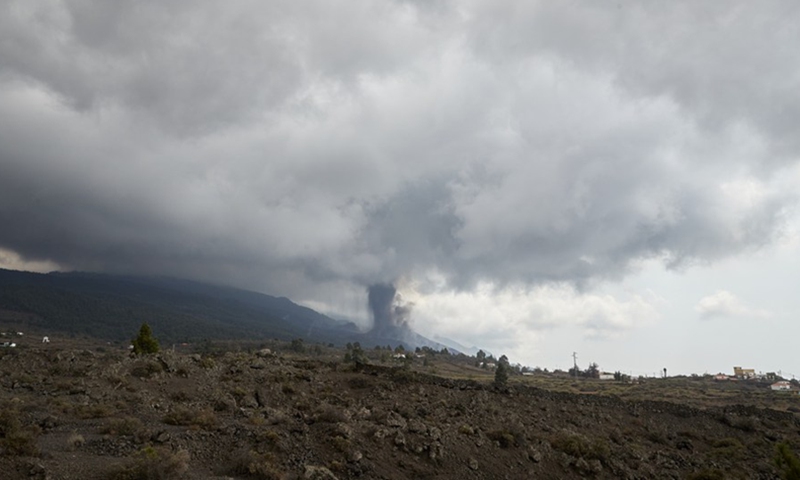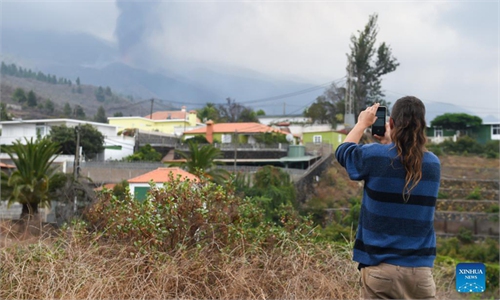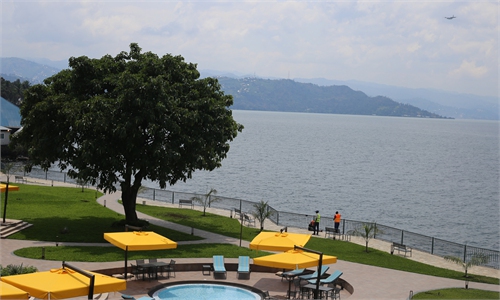Flights resume after volcano forces closure
Spain’s Canary Islands step out from under ash cloud caused by eruption

Photo taken on Sept. 24, 2021 shows the scene of volcanic eruption of Cumbre Vieja volcano in La Palma, Spain. (Photo: Xinhua)
Flights to and from La Palma in Spain's Canary Islands resumed Saturday after the airport reopened following a 48-hour closure due to volcanic ash, airlines and the airport authority said.Clouds of thick ash from the volcano had shuttered the airport on Thursday for the second time since the September 19 eruption on La Palma, one of the Spanish islands off the northwestern coast of Morocco.
"La Palma airport is back in operation," Spain's AENA airport authority tweeted, with local Canaries airline Binter confirming it had resumed flights several hours later.
"Binter has resumed its flight schedule with the island of La Palma following an improvement in weather conditions and the ash cloud," an airline statement said.
Thick ash had forced the airport to close down on September 25 but although it reopened 24 hours later, it was three days before flights resumed.
It has been almost three weeks since La Cumbre Vieja began erupting, forcing 6,000 people from their homes as the lava scorched its way across 1,200 acres (486 hectares) of land.
Earlier on Saturday, part of the volcano's cone collapsed, sending new rivers of lava pouring down the slopes toward an industrial zone.
"It seems part of the cone has collapsed... giving way to two different lava flows," volcanologist Stavros Meletlidis of Spain's National Geographic Institute (IGN) told RNE radio.
He said one had opened a new path, while the other was following the path of an earlier flow "but with a higher volume of lava, looking like it will overspill the old flow at some point."
Miguel Angel Morcuende, technical head of the Pevolca volcanic emergency committee, said they were concerned about one of the flows that was approaching the Callejon de la Gata industrial estate, which includes warehouses and businesses.
Experts also said there was a risk that the lava delta, now stretching 80 acres into the sea, could collapse as it reached the outer limits of the island's coastal shelf.
"Having reached the limit of the coastal shelf, if it continues to advance, its crust could collapse which could cause the abrupt release of gases, magmatic explosions and the generation of waves," said Maria Jose Blanco, the IGN's director in the Canary Islands, speaking at the same news briefing.
A costal or insular shelf is the underwater landmass surrounding an island, which extends from the shore to a depth of about 100 fathoms (about 180 meters) after which there is a sudden steep descent.
According to the latest snapshot from the EU's Copernicus satellite, the lava had covered almost 1,200 acres of land and destroyed 1,149 properties.
AFP



